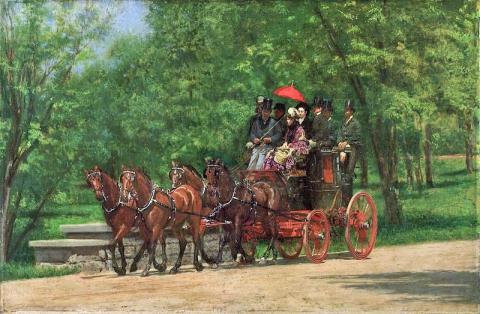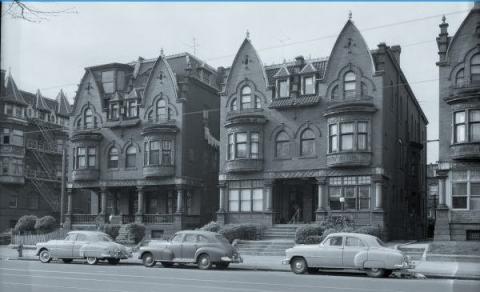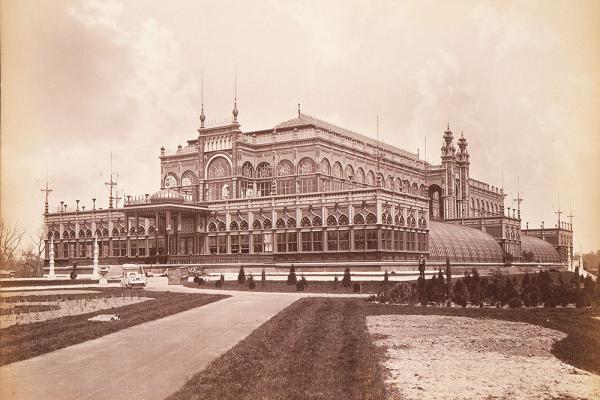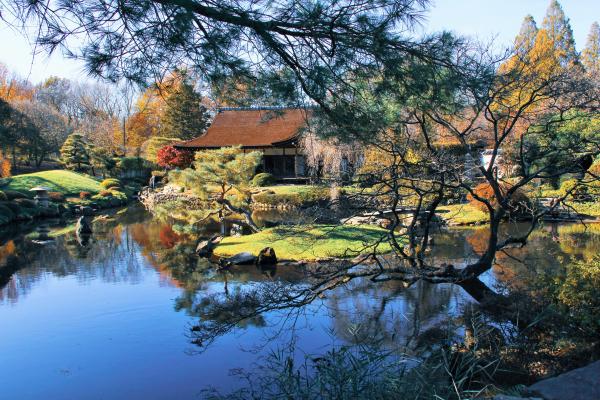Parkside: A Neighborhood Arises After the Fair
In the first half of the 20th century, German-Americans, Jewish immigrants of Russian descent, and African Americans of the Great Migration resided in this neighborhood. Around 1900, housing designed in Victorian motifs arose opposite the green spaces of the Centennial Exposition along Parkside (formerly Elm) Avenue, where they remain today in varying degrees of decline and renewal.
Parkside (formerly Elm) Avenue’s proximity to the green spaces of the former grounds of the Centennial Exposition attracted wealthy, typically German-American homebuyers from the congested central city at the turn of the 20th century. The houses they purchased were distinctly Victorian. The population of the neighborhood that arose here after 1900 was predominately Jewish by the 1920s and African American by the 1950s.
Maps of the 1876 Centennial Exposition show Elm Avenue fronted by Main Exhibition Building and Machinery Hall—the thoroughfare that would later be renamed Parkside Avenue. Commercial activities on the south side of that street were viewed as problematic by the Exposition’s organizers.
Outside the gates, a small, temporary city grew up along what later became Parkside Avenue. Flimsy, wooden structures housed dubious hotels, low-end restaurants, ice cream saloons, beer gardens, and “shows,” and were sandwiched two or three deep on narrow lots. They stretched a mile in each direction from the main gate and provided entertainment the commissioners deemed inappropriate on the grounds proper. Profits trumped morality, however, and when attendance flagged at the fair, the organizers allowed the sale of wine and beer. However, they resisted opening on Sundays, and amusement-park rides and “hoochie-koochie dancers” had to await the Chicago Fair of 1893.1
Whereas the “now-cleared fairground was protected as green space . . . the area around it remained largely undeveloped.” This would not be the case for long. The city’s surging population growth and industrial expansion in the 19th century’s final quarter left Center City both congested and polluted. “For those who could afford it, a new West Philadelphia neighborhood fronting a verdant park—with its tree-shaded promenades and carriage trails—could be an attractive alternative to Rittenhouse Square or Fairmount.” The opportunity for housing development came in 1895 with the extension of trolley lines from the former fairgrounds to Center City and other areas.2
Brewing beer was the original basis of the fortune made by Frederick A. Poth, the entrepreneur who first envisioned upscale houses on Parkside Avenue at the turn of the last century. Real estate clippings from the Philadelphia Inquirer in the 1890s document the role Poth, a German-born immigrant, played in this development. Poth, who had operated one of the Exposition’s sanctioned beer gardens, invested his fortune in building elegant twin houses in Parkside for wealthy business owners, industry executives, and professionals. Many of the purchasers who arrived in Parkside were wealthy German Americans. F.A. Poth moved his own family to a “freestanding mansion” at 4130-40 Parkside Avenue, where he resided until his death in 1905.3
Apparently, the novelty of residing in Parkside wore thin for the early purchasers. The 1930 U.S. Census shows a concentrated Russian Jewish presence on the avenue, in both East and West Parkside, opposite the former Centennial Exposition grounds. For these immigrants and their American-born children, Parkside represented upward mobility from the cramped rowhouses they inhabited in South Philadelphia. Their fortunes were soon to change, however. The Great Depression took a heavy toll on the neighborhood, and “most of these big twin houses were divided into efficiency apartments and rooming houses, and lost most of their interior fixtures.”4
After World War II, “the Great Migration coupled with ‘white flight’ transformed Parkside into a predominantly African-American neighborhood.” Landlords looked the other way as the old Victorians deteriorated and the neighborhood “suffered from divestment.” Parkside lost the Girard Avenue Trolley.
In 1983, community organizers, as a major step toward Parkside’s revitalization, got the neighborhood listed on the National Register of Historic Places. Over the past several decades, community groups have renovated many of the mansions along Parkside Avenue into affordable apartments.” Restoration of the trolley lines in 2005 and the opening of the Please Touch Museum in 2009 have given the neighborhood a commercial boost.5
[1] Stephanie Grauman Wolf, “Centennial Exhibition (1876),” Encyclopedia of Greater Philadelphia.
[2] Steven Ujifusa, “After the Fair: The Development of Parkside,” PhillyHistory Blog, PhillyHistory.org, 5 May 2010.
[3] Steven Ujifusa, “Parkside Revisited (Again): A Look Inside 4230 Parkside Avenue,” PhillyHistory Blog, PhillyHistory.org. For Poth’s biography, see “Frederick A. Poth: Red Bricks and Gold Beer (Part 1),” Discoveries from the City Archives, PhillyHistory.org, 3 January 2014.






